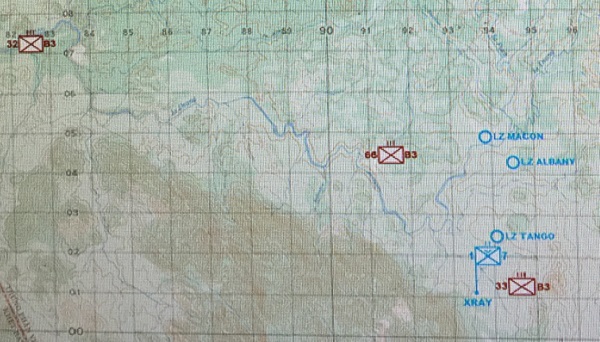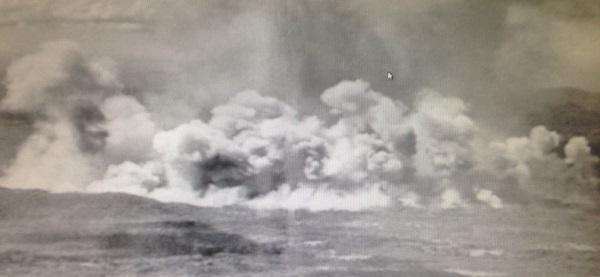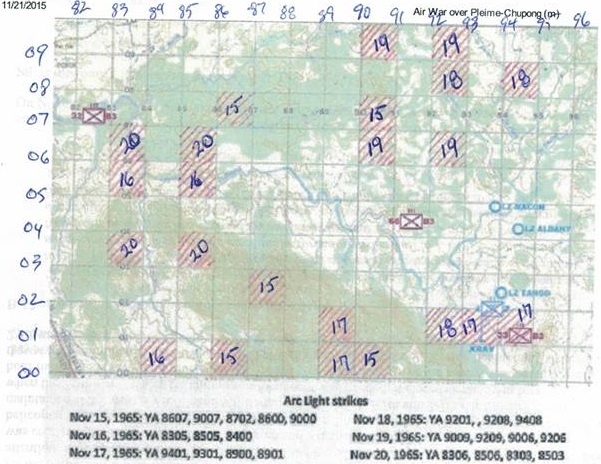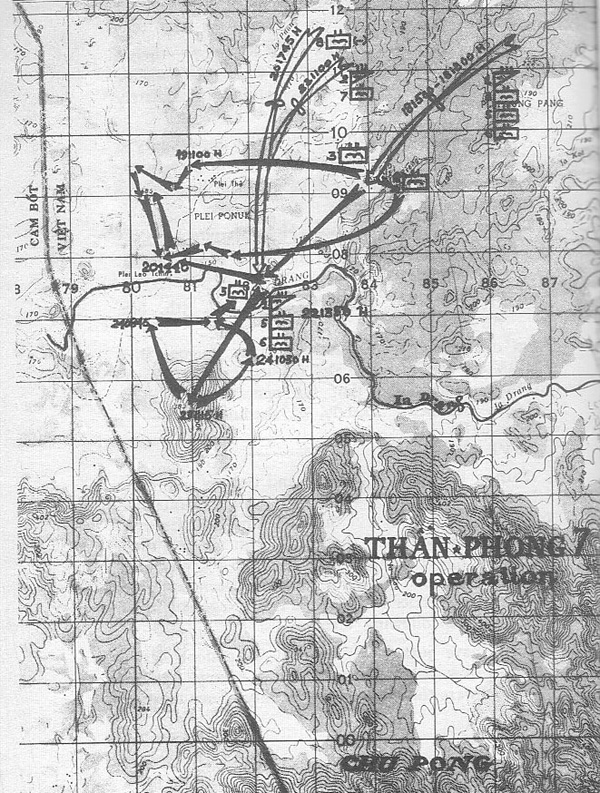
Catching a Thief Tactic
In the book Pleime, Trận Chię́n Lịch Sử, page 98, Colonel Hieu, II Corps Chief of Staff, assesses:
It is not that the enemy is formidable, having a marvelous tactic, but it is merely that it is difficult to catch a thief in the night time.
Because he is aware that the tactic used in “Plâyme” campaign is a thief’s tactic, Colonel Hieu applies the catching a thief tactic in the Pleime campaign to solve the problem presented on the battlefield.
In a nutshell, the thief's tactic consists in stalking a victim then springing into action the moment the latter gets distracted.
Consequently, catching a thief tactic consists of making believe that one is distracted to lure the thief into action and surprise him with a strike he least expects.
What the Viet Cong was not aware of was that II Corps had been studying a plan of catching a thief that comprised three Regiments – 32nd, 33rd, and 66th – since September 1965, prior to the first shot at Pleime camp on October 20, 1965, as revealed in the document Intelligence Aspects of Pleime-Chupong Campaign, page 6:
The Chu Pong base was known to exist well prior to the Pleime attack and J2 MACV had taken this area under study in September 1965 as a possible B-52 target.
II Corps had considered using B-52 airstrikes as the most efficient means of destroying three enemy regiments simultaneously. Obviously, it was not an easy task to achieve because it was like "using a sledgehammer to kill gnats" or using a "sledgehammer to kill fleas", as the fleas disperse at once in all directions at the sight of the sledgehammer falling in relatively slow motion and hitting an empty target.
Because it was considered an impossible task to achieve, it was an efficient destruction method. The enemy could never fathom it, thinking the deadly force would come from ground troops instead of from the overhead sky.
Furthermore, this was the most efficient means to destroy an enemy that broke down in small pieces when facing a stronger opponent and only amassed to attack a weaker opponent.
An essential element in the catching a thief tactic was the ability to stalk, to be able to follow every one of the thief's moves, especially when the thief is smart and excellent at hiding. In the Pleime campaign, II Corps was fortunate in getting the support of an intelligence component that intercepted radio communications between Chinese Advisors providing logistics support to the Plâyme campaign present in Phnom Penh and the VC high command in Hanoi; it was by this means that II Corps was able to know every move of the enemy in this campaign. Colonel Hieu writes in Pleime, Trận Chię́n Lịch Sử, page 172:
The natural corridors often mentioned by General Delange in 1951 would not be efficient without the existence of Cambodia, without the concealment of Red Chinese advisors who enjoyed full amenities living in Phnom Penh, without the excellent communication by ways of telephone and airgram between Phnom Penh and Hanoi.
The intelligence source by way of radio intercept was kept secret by II Corps, unaware by the enemy; as a result, “we know the enemy, while the enemy does not know us.” The enemy kept on thinking that we inserted “spies” among their troops ( Intelligence Aspects of Pleime-Chupong Campaign, intelligence summary 11/1/1965):
- On 11/1, soon after arrival at Anta Village, the regimental cadres held a conference in an attempt to discover what was allowing the US forces to make such repeated, accurate air strikes. It was concluded that only spies within the ranks could be furnishing the location and movement of the regiment's elements.
The only remaining difficulty is to act as if one is distracted, leading the enemy into thinking it is safe to regroup and then suddenly hit the enemy's head with the sledgehammer.
The various troop maneuvers in the stalking of the thief unfolded as follows.
- Dan Thang 21 Operation
When B3 Field Front changed its schedule in launching the Plâyme campaign earlier, it had only two Regiments - 32nd and 33rd - present at the battlefields, on October 20, 1965, with the 66th Regiment still marching down the Ho Chi Minh Trail. The 66th Regiment only arrived three weeks later even when they were ordered to speed up. II Corps adapted to the delayed tactic, not reacting forcefully, only moderately enough to not to allow the enemy to achieve its "attack the camp and destroy the rescue force" plan. Therefore, II Corps only reinforced the Pleime camp with two companies of Vietnamese-American Special Forces, instead of calling in its two reserve forces of Marine Corps and Airborne, while refusing the offer from General Kinnard, 1st Air Cavalry Division Commander, to use an entire Air Cavalry brigade in the relief of the besieged camp.
After failing to achieve its plan and with heavy loss, B3 Field Front ordered 32nd and 33rd Regiments to withdraw back to Chu Pong. At that time, Colonel Hieu bet the enemy would not desist and would contemplate revenge in attacking Pleime camp for the second time with its three 32nd, 33rd, and 66th Regiments. He would wait for that opportunity to use B-52 airstrike to destroy the enemy in mass.
Colonel Hieu assesses (Pleime, Trận Chię́n Lịch Sử, page 94):
In order to keep the enemy wanting to take control of Pleime camp, Colonel Hieu maintained it under II Corps responsibility while expanding 1st Air Cavalry Division's operational areas (J3 Journal/FFV, 10/30/65 ):With Dan Thang 21 operation finished, the Pleime camp was back on its footing, but among the two VC Regiments that had joined in the attack, we only inflicted 400 kills upon the enemy. The withdrawal was a rational and intelligent initiative taken by the VC Field Front Command. But the enemy would attempt to take revenge and the remote Pleime camp remains an eyesore to them.
- 00:50H: II Corps (Major Black) - At 292350 Col Williams called Col Hieu, CofS II Corps. II Corps requested that 1st Cav TAOR be extended to include the Plei Me area except the camp itself. From present line on NS grid line ZA14 east to NS grid line AR77, on EW grid line ZA/AR15, south on AR77 to EW grid line 00, then west to NW grid line ZA14. Col Buchan, Gen Knowles, Col Williams and Col Mataxis agree.
- 00:12H: II Corps Col Williams - Request extension of TAOR (as outlined in telecon fm Maj Black at 0005) be approved by FFV. Col Barrow notified; Request approved 0025; II Corps notified 0030; 1st Cav notified 0040.
- Long Reach Operation
Thus, the operational concept of Long Reach aimed at destroying the three VC regiments simultaneously at Chu Pong by B-52 airstrikes. This operation comprised two phases: herding the enemy with All the Way operation conducted by 1st Air Cavalry Brigade and enticing the enemy into regrouping with Silver Bayonet I operation conducted by 3rd Air Cavalry Brigade.
To deceive the thief, the 1st Air Cavalry Brigade was officially assigned the task of search and destroy the withdrawing enemy. But in fact, the brigade used helicopters to herd the dissipated enemy troops back to Chu Pong base, not allowing them to linger in between Pleime and Chu Pong. That was why the Eagle Flight teams were only directed to shoot at scattered small enemy groups and spared the mobile positions of the two regimental command posts. Meanwhile, the withdrawal moves of the enemy troops were closely monitored by G2/II Corps:
On 10/27, the lead elements of the 33d had closed on it forward assembly area, the village Kro (ZA080030); on 10/28, the 32d Regiment had nearly closed its base on the north bank of the Ia Drang; on 10/29, the 33d Regiment decided to keep the unit on the move to the west, to Anta Village ( YA940010), located at the foot of the Chu Pong Massif; on 11/1, the 33rd regiment headquarters closed in at Anta Village; on 11/2, by 0400 hours, the 2d, the regimental CP had arrived at Hill 762 (YA885106); on 11/05, units of 66th Regiment continued to close in the assembling areas in the Chupong-Iadrang complex; on 11/07, the depleted 33d Regiment licked its wounds and waited for its stragglers to come in, meanwhile the remainder of Field Front forces were quiet; on 11/08, only fragmented units and stragglers remained east of the Chu Pong-Ia Drang complex; on 11/09, the 33d Regiment gathered in the last of its organic units; on 11/11, the three battalions of the 66th Regiment were strung along the north bank of the Ia Drang river (center mass at 9104), the 32nd Regiment was also up north in the same area (YA820070), the 33rd Regiment maintained its positions in the vicinity of the Anta Village, east of the Chu Pong mountains.

Following the achievement of herding of the thief, the 3rd Air Cavalry Brigade replaced the 1st Air Cavalry Brigade on 11/9 with the task of enticing the thief to regroup. This operation took the name of Silver Bayonet I. Its operational concept was to pretend to lose track of the thief and switch the operational direction eastward, back to Pleime. The thief fell for the subterfuge and thought it was safe and on 11/11 ordered its troops to regroup in preparation - reorganization, re-equipment, and rehearsals - for a second attack against Pleime set for 11/16.
On 11/12, 3rd Air Cavalry Brigade was ordered to revert to Chu Pong, and this time it was assigned the task of fixing the enemy troops at their staging areas until the arrival of B-52s coming from Guam before they moved out to attack Pleime camp. 3rd Air Cavalry Brigade sprung into action upon receiving an alert from an intelligence source that the enemy troops got the order to move out on 11/14.
The tactic of deceiving the thief at this stage consisted of faking a punch to its flank but, in fact, the sledgehammer was coming down overhead.
In other words, the diversionary tactical concept was to insert a sizable ground force to attract the attention of the enemy and entice the enemy to delay the attack against Pleime to deal with the new threat that was less significant; then to shower the enemy with the B-52's bombs.
On 11/4 morning around 10 A.M., 1/7 Air Cavalry Battalion using 16 helicopters noisily entered LZ X-Ray about 200m next to the position of 66th Regiment. B3 Field Front decided to postpone the attack of Pleime camp and met the new threat with two 7th and 9th Battalions of 66th Regiment. 3rd Air Cavalry Brigade only sent in one battalion (2/7 Air Cav) as reinforcement so as not to cause the enemy to pour in more troops. And when that was not sufficient, 2/5 Air Cavalry was sent in, but was not helilifted into LZ X-Ray, but rather at LZ Victor, and stealthily march through the 5 km distance and closed in by noon, while the enemy still thought the balance of troops remain at 2:2.
As a result, B-52 bombers got the opportunity to strike at the stationary targets comprising troops of the two 32nd and 33rd Regiments taken by surprise. The first bombing waves struck at 16 hours on 11/15 and the second the next day on 11/16.

On the morning of 11/16, 1/7 Air Cavalry Battalion was helilifted out of the landing zone; but 2/7 and 2/5 Air Cavalry Battalions remained to continue to fix the enemy. On 11/17, the two Battalions were ordered to abandon the landing zone by land toward LZ Columbus and LZ Albany to allow B-52 airstrikes to destroy troops of the 66th Regiment deployed at and around LZ X-Ray.
On November 15 and 16, B-52 airstrikes aimed mainly at the positions of units of the 33rd and 32 Regiment; on November 17, 18 and 19, units of the 66th Regiment; and on November 20, units of the 32nd Regiment.
General Knowles reveals that the purpose of the insertion of the Air Cavalry troops at LZ X-Ray on November 14 was to “grab the tiger by its tail” and to hit its head with B-52 airstrikes from November 15 to 16. He also explains the reason for pulling out of LZ X-Ray on November 17 and moving to LZ Albany was “to grab the tiger by its tail from another direction” and continued to hit its head with B-52 bombs from November 17 to 20.

Around that time, II Corps intelligence source intercepted communications indicating B-52 airstrikes caused the thief to suffer around 2,000 killed and the two surviving Battalions – 635th and 334th – were ordered to withdraw to Cambodia through the narrow corridor of Ia Drang river, the first along the north side of the river and the latter the south side. II Corps Command decided to send in the ARVN Airborne Group to “finish them off.”
- Than Phong 7 Operation
On 11/18, while a new artillery support base was established at LZ Crooks (YA 875125), five ARVN Airborne battalions were transported by C-130 airplanes from Phu Yen, Vung Tau, Bien Hoa and Saigon to Pleiku.
Based on precise intelligence source, 3rd and 6th Airborne Battalions were inserted in the northern area of Ia Drang in the afternoon of 11/18 to ambush 635th Battalion at YA 805080 on 11/20.
And also based on accurate intelligence source, the four 5th, 6th, 7th, and 8th Airborne Battalions –after crossing Ia Drang river to the southern side (3rd Airborne Battalion reverted to the northern side to destroy three training centers), set up an ambush site to intercept 334th Battalion at YA 815070 on 11/24.

Conclusion
Due to the use of catching a thief tactic, the Pleime campaign achieved a satisfactory military operation. It is no doubt that Colonel Hieu did not learn this tactic in basic or high military academies, but it was a product of his innate skills. He was clever in faking ignorance, unawareness, distraction, and leading the thief in thinking he was in control of the situation, when in fact the enemy was rather entirely controlled to the point of being caught red hand at the least expected moment and manner.
Colonel Hieu succeeded not only in deceiving the Viet Cong; even the majority of high command officers, historians, and scholars, both Vietnamese and American, even to this day are unaware of this catching a thief tactic. As a result, everybody views and describes the various battles in the Pleime campaign – Pleime, Chu Pong, and Ia Drang – in a distorted and inadequate manner.
Nguyen Van Tin
2 May 2014
- Operation Pleime-Chupong B-52 Strike?
- The Use of B-52 Strike in Ia Drang Campaign, General Westmoreland’s Best Kept Military Secret
- Air War Over Pleime-Chupong
- Arc Light over Chu Pong Operation
- Catching a Thief Tactic in Pleime Campaign
- Pleime/Chupong Campaign Destroying B3 Field Front Base
- The Uniqueness in Pleime Counteroffensive Operational Concept
- Pleime Counteroffensive into Chupong Iadrang Complex
- The Unfolding of Strategic and Tactical Moves of Pleime Campaign
- Battle of Pleime
- The Truth about the Pleime Battle
- Intelligence Gathering at Ia Drang
- Intelligence, the Key Factor in the Pleime Campaign's Victory
- Roll Call of Combatants at Pleime-Chupong-Iadrang Battlefront
- "Victory at Pleime" ?
- Tactical Moves in Pleime Battle
- Kung Fu Tactics at Pleime Campaign
- Various Diversionary Moves in Support of Arc Lite Strike in Pleime Counteroffensive
- What if there was no master plan for Pleime Counteroffensive?
- Pleime/Chupong Campaign Destroying B3 Field Front Base
- A Few Things You Should Know about Pleime-Iadrang Campaign
- Things the VC Don't Want People To Know at Pleime Battle
- Reviewing "Why Pleime"
- Review of "Intelligence Aspects at Pleime_Chupong Campaign"
- Perplexing Maneuvers at Pleime-Chupong-Iadrang You Might Be Attempted to Question
- A Bird’s-Eye-View of Pleime Campaign
- Operation Dan Thang 21
- US Air Force’s Roles in Pleime Campaign
- Arc Lite Operation Planning and Execution in Pleime Offensive
- A Doctrinal Lesson on the Use of Arc Lite in Pleime Counteroffensive
- Command and Control of Arc Light Strike at Chupong-Iadrang
- A Military Genius in Action at Pleime-Chupong-Iadrang Battlefront
- Command and Control Skills in Pleime Campaign
- Behind-the-scenes Activities at Various Allied Headquarters During Pleime Campaign
- The Two Principals Players Of Pleime Chess Game
- Pleime Battle's Diary
- Pleime Campaign and Pleiku Campaign
- A New Look at Ia Drang
- Operation Long Reach
- LZ X-Ray Battle (General Knowles)
- My Contributions to the Battle of Ia Drang in Wikipedia
- Operation LZ X-Ray
- Colonel Hal Moore’s Self-Aggrandizement in “We Were Soldiers Once ... and Young”
- Colonel Hal Moore Misunderstood his Mission at the Ia Drang Battle
- What Historians Failed to Tell About the Battle at LZ X-Ray
- Hal Moore and 1/7th Air Cavalry Battalion's Real Mission at LZ X-Ray
- Two Different Narrations of LZ X-Ray Battle by II Corps
- Ia Drang Valley Battle? Which One?
- LTC Hal Moore Summoned to a Woodshed Session?
- Colonel Hieu's Operational Concept for LZ X-Ray
- LZ Albany Battle - Chinese Advisors' Perspective
- A Puzzling Air Assault Performed by 1/7 Air Cavalry at LZ X-Ray
- Two Different Narrations of Than Phong 7 Operation by II Corps
- General Schwarzkopf's Naďveté In Ia Drang Battle
- Venturing into Lion's Den in Ia Drang Valley
- American Perspective of Pleime Battle
- General Kinnard's Naďveté in Pleime Campaign
- "No Time for Reflection at Ia Drang" ?
- Pleime Campaign or Pleime-Ia Drang Campaign?
- A Critique of General Bui Nam Ha's Opinions about Plâyme Campaign
- Commenting on General Nguyen Huu An's Account of Plâyme Campaign
- Crushing the American Troops in Western Highlands or in Danang?
- What Really Happened at Ia Drang Battle
- Case Study of a Typical Misinterpretation of Ia Drang Battle
- Ia Drang Battle Revisited
Documents
- Why Pleime
- Pleime, Trận Chię́n Lịch Sử
- Pleime Battle Viewed From G3/I Field Force Vietnam
- Long Reach Operation Viewed From G3/I Field Force Vietnam
- LZ X-Ray Battle and LZ Albany Battle Viewed From G3/I Field Force Vietnam
- Than Phong 7 Operation Viewed From G3/I Field Force Vietnam
- Arc Light Strike at Chupong-Iadrang Viewed From G3/IFFV
- Pleiku Campaign
- Intelligence Aspects at Pleime_Chupong Campaign
- Excerpts of General Westmorland’s History Notes re: Pleime-Chupong-Iadrang Campaign
- LZ X-Ray Battle (General Knowles)
- LZ X-Ray After Action Report - LTC Hal Moore and Colonel Hieu
- Than Phong 7
- 52nd Combat Aviation Battalion in Support of Pleime Campaign
- CIDG in Camp Defense (Plei Me)
- Viet Cong Requested Red China's Aid
- Battle of Duc Co
- NVA Colonel Ha Vi Tung at Pleime-LZ Xray-LZ Albany
- The Fog of War: The Vietnamese View of the Ia Drang Battle
- No Time for Reflection: Moore at Ia Drang
- 1st US Cavalry Division Gives Support in the Battle at Plei Me
- Plei Me Fight Stands As War Turning Point
- Plei Me Battle
- Seven Days of Zap
- Pleime Through New York Times' View
- First Engagement With American Troops at Pleime-Iadrang
- Pleime Campaign
- Crushing the American Troops in Central Highlands
- NVA 66th Regiment in Pleime-Ia Drang Campaign
- The Political Commissar at the First Battle Against the Americans in Central Highlands